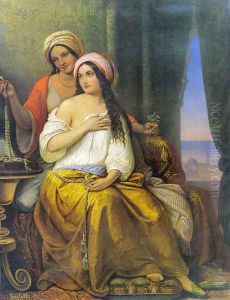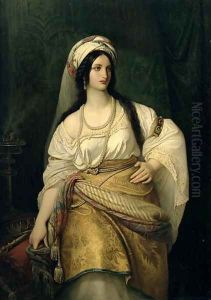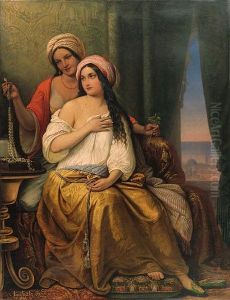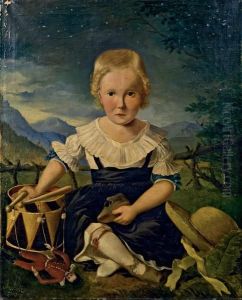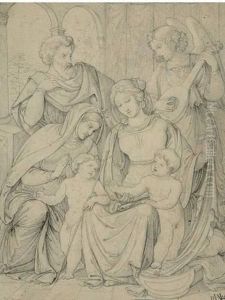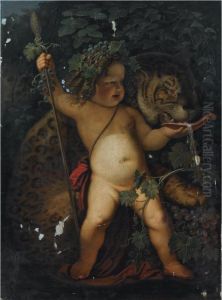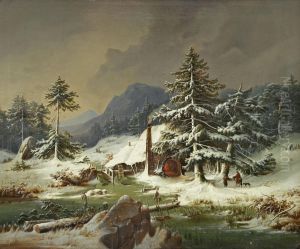Hermann Anschuetz Paintings
Hermann Anschütz was a German painter and professor who is not to be confused with the American inventor Hermann Anschütz-Kaempfe. Born in Koblenz on October 12, 1802, Anschütz studied at the Düsseldorf Academy under Peter von Cornelius, who was a significant figure in the German Romantic movement and the Nazarene movement. Anschütz later followed Cornelius to Munich, where he became part of the circle of artists that were influential in the development of the German Romantic style.
During his career, Anschütz primarily worked as a history painter, which was a common practice among German artists of that time who were influenced by Romanticism. They often sought to capture grand historical themes, myths, and legends through their art. Anschütz's works were known for their use of color and his ability to portray light, which he studied extensively. He was also interested in the technical processes of painting and the scientific aspects of color, which led him to develop his own theories on color theory and to be an influential teacher.
Anschütz's most significant contribution to the world of art might be as a teacher rather than as a painter. In 1831, he was appointed a professor at the Academy of Fine Arts, Munich, where he taught a number of students who would go on to become notable artists themselves. Among his pupils was Wilhelm Leibl, a realist painter who is considered one of the foremost artists of his time in Germany. Anschütz's teaching extended beyond the traditional methods of the time, and he was known for his progressive views on color and painting techniques.
Anschütz never achieved the same level of fame as some of his contemporaries or students, but his impact on the German art scene of the 19th century was significant, particularly in his role as an educator. He continued to teach until his death in Munich on December 5, 1880. His legacy is one of a dedicated teacher who influenced the next generation of artists and contributed to the broader conversation on color theory in art.
